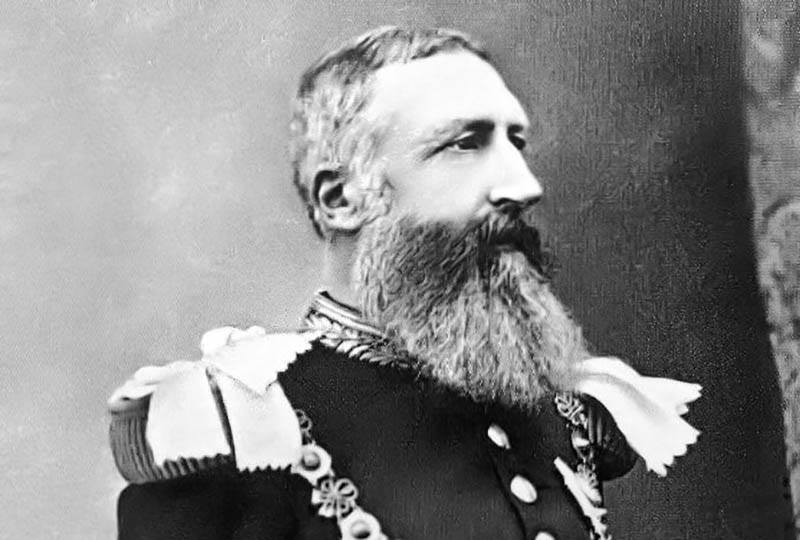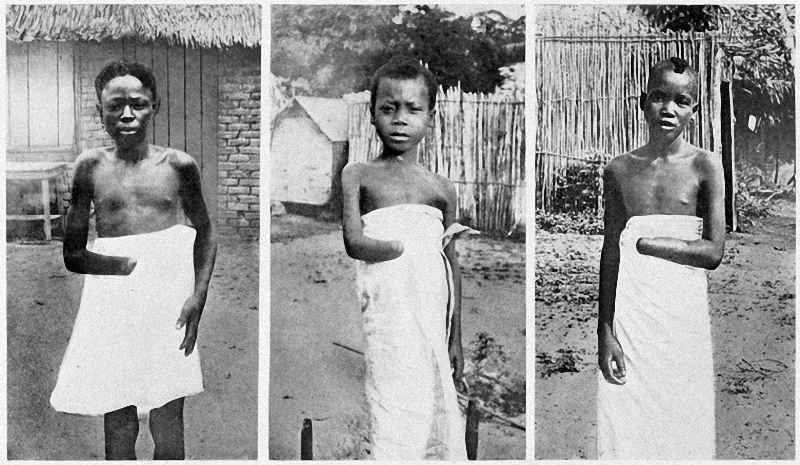President Robert Mugabe of Zimbabwe once orchestrated the murder of 20,000 civilians from a single province, after failing to receive a single vote. Josef Stalin deliberately starved as many as ten million Ukrainians to death, in a political “terror famine” known as the Holodomor. Pol Pot and a revolutionary socialist cadre of nine – the Ang-Ka – killed between 1.7 and 2.5 million fellow citizens of late 1970s Cambodia: about 1/5th of the entire population. Mao Tse-Tung’s policies and political purges killed between 49 and 78 million of his own citizens, between 1949 and 1976.
You’re really playing in the Big Leagues, when they can’t get your body count any closer than the nearest thirty million.
From Adolf Hitler to Idi Amin, the top ten dictators of the last 150 years account for the loss of nearly 150 million souls. We remember the names of these people, or most of them, as some of the great monsters of history.

Yet, one man escapes notice, though his crimes rival and even exceed the worst atrocities carried out by twentieth century dictators. He is King Leopold II of Belgium. For nearly thirty years, the undisputed slave master of a personal plantation some 76-times the size of Belgium itself, and run for the personal enrichment of this one man.
As late as 1870, the European powers controlled barely ten percent of the African continent, with most of those holdings, along the coast. By the outbreak of the Great War in 1914, only Ethiopia and Liberia remained independent of European control.
From German East Africa to Italian Somaliland, most of the continent was carved into colonies of the various European powers, administered by governments in France, Britain, Germany, Italy, Portugal and Spain.
Leopold II ascended to the throne to become King of the Belgians on this day in 1865. Like most of the statesmen of the era, Leopold was convinced that a nation’s greatness, lay in proportion to its overseas empire. He first cast his gaze on the Philippines, then a Spanish possession, but negotiations broke down when Queen Isabella II was deposed in the “Glorious Revolution” of 1868.
Leopold next set his sights on Africa. Henry Morton Stanley may never have ‘presumed’ to meet up with Dr. Livingstone in “Darkest Africa”, had it not been for the personal assistance of one Tippu Tip, the most powerful of Zanzibar’s Arab slave traders. This was an execrable lot, Stanley himself once lamented the lack of a heavy machine gun, on witnessing the abject misery of 2,300 unfortunates, held captive by these people: “Would to God I could see my way to set them all free and massacre the fiends guilty of the indescribable inhumanity I have seen today.‘

Leopold buttressed what was at fist a weak position with an alliance with the Arab slave trader, and later raised an army of Congolese mercenaries, to wrest control. The two year Congo-Arab war was a proxy war, fought mostly by native Congolese aligned with one side or the other, and sometimes switching sides.
Leopold emerged victorious from this Imperial double-cross, and set about reorganizing his mercenaries into a Force Publique, charged with enforcing his will across a region three-times the size of Texas and cynically called, “The Congo Free State”.

Leopold’s Congo was divided into districts for the purpose of extracting all the region could produce, in ivory, gold, diamonds, rubber, and more. Provincial governors were paid by commission, and press-ganged enormous numbers of Congolese into agricultural labor, or worked them to death in the mines.
Entire ecosystems were denuded of large animals, as beaters in the hundreds or thousands drove ivory-bearing elephants by raised shooting platforms, where European “hunters” awaited, armed with a dozen rifles apiece.
Rubber plantations took space and clear-cutting old-growth rain forest took time, so the King’s agents drove villagers from their homes, to fend for themselves. Problem solved, instant space for the most important cash crop, of the era.
The greed of these overseers is hard to get one’s head around. Failure to meet quotas for gold or ivory would be met with mutilation, most often taking the form of amputation of a foot, or a hand. If a man needed both hands to work or if he couldn’t be caught, hands and feet would be cut from his wife, or his children.
While the King never personally set foot on African soil, the savagery inflicted on the Congolese by Leopold’s agents has been compared with the Mongol rampage across Asia, of a thousand years prior. It’s impossible to know how many died of overwork, starvation or disease, or the infection caused by mass amputations. An estimated twenty million populated the Congo Free State in 1885. By the time of the 1924 census, that number had fallen to ten million, with no corresponding influx into neighboring regions.

The Belgian government reluctantly took over administration in 1908, but the whippings and mutilations continued in Leopold’s Congo, long past the time of Leopold himself. The wealth of the region continued to be siphoned off until Congolese independence, in 1971.
Today, the “Democratic Republic of Congo”, sometimes referred to by a former name of “Zaire”, has yet to recover. The “Great African War” swept over the region in the 1990s, killing some six million and overturning one dictator in Kinshasa, for yet another. The Tutsi genocide led by Hutu-militia in 1990s Rwanda, is familiar to the modern reader.

Today, one of the most resource-rich regions in the world remains in abject poverty, with infant mortality twelve times higher and life expectancy 23 years shorter, than that in the United States.
Leopold II, King of the Belgians and at one time the largest landowner on the planet, died peacefully on December 17, 1909, forty four years to the day, from his coronation.
If you enjoyed this “Today in History”, please feel free to re-blog, “like” & share on social media, so that others may find and enjoy it as well. Please click the “follow” button on the right, to receive email updates on new articles. Thank you for your interest, in the history we all share.



Horrendous…I didn’t realize it went on for that long.
LikeLiked by 1 person
This one was pretty rough reading. No wonder the place is still a basket case.
LikeLiked by 1 person
I agree. The amputations and raping the land. If they would have done it right…they could have gotten more in the long run.
LikeLiked by 1 person